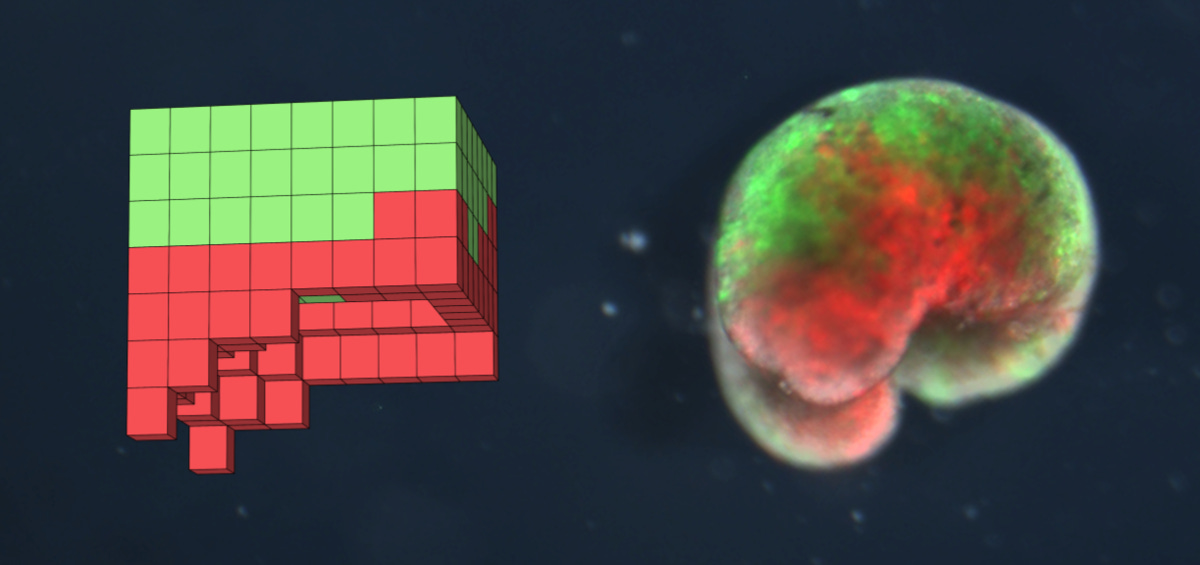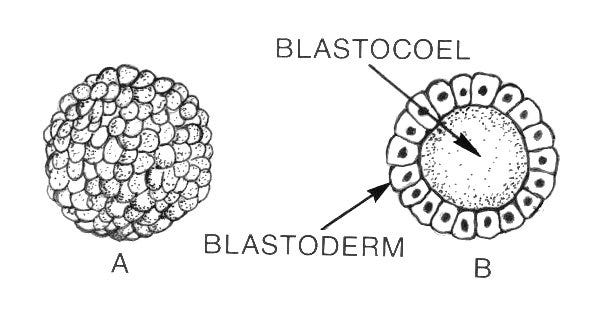Xenobots: Self-Replicating Biobots
Programmable organism made from frog cells
Hey y'all,
Happy Saturday! I wasn't able to get last week's posts out as I'm involved in a few software-related projects that have been eating up some time (that's also exciting though!). I always want to focus on quality rather than quantity. If you haven't gotten the update, I'll be sharing my posts on Saturdays and Sundays. It seems to be the sweet spot for my schedule and for those following along, as people have time to read on weekends.
Today, we'll be touching on some fascinating stuff: biological robots. Through this post, I think you'll also see what I see regarding the way we look at intelligence. It's not about which living organism is intelligent or not, but to what degree and what type of problems they solve in their own space.
Let's get cracking.
“Cogito, ergo sum”
"I think therefore I am," said René Descartes after thinking long and hard to understand if he existed or not. But what's existing? René? Or the collections of cells — living organisms that reside in him? How about a living robot created from a frog? Most likely not, you might say. In one of our previous posts, we did conclude that intelligence is defined as "the ability to get to the same goal by different means."
Xenobots are just that. They are "living robots". Created from the cells of frog embryos (Xenopus laevis), they stand at the intersection of biology and technology. Here are a few of the functionalities they have:
They can swim in water environments
They can heal after being damaged
They show group behaviors when in swarms
Unlike your typical robots made of metal and plastic, Xenobots blur the lines between machine and organisms. Cyberpunk vs Solarpunk?
Design and Formation
Simply put, researchers separated skin and heart cells. The skin cells were chosen for their capability to bond together to form the passive architecture of the Xenobot. Heart cells were chosen for their ability to contract and relax — the engine of these bots. After observing the dynamics of these cells, the data was fed into an evolutionary algorithm run on a supercomputer. With this data, the computer was able to create millions of cell configurations to test for a desired outcome. In this case, the ability to move from one point to another. The fittest configuration moved onto the next stage. Those designs were iterated on again to create even better digital models. After about 100 test runs, the best configurations stood out. With these blueprints, they actually had to create these. The tricky part. Where biology truly meets engineering. The team of researchers had to use incredibly sensitive instruments and a microscope to painstakingly perform microsurgery on heart and skin cells to create these organisms. And in 2020, they finally published this paper, "A scalable pipeline for designing reconfigurable organisms," where they accomplished their goal: the Xenobot.
To get into the weeds of this (feel free to skip this part), the researchers harvested stem cells from early frog embryos in the blastula stage. The blastula stage occurs early in embryonic development. At this point, the embryo is a hollow ball of cells. The outside of this ball, called blastoderm, contains cells that can turn into different types of cells (skin and heart cells) and ultimately tissue. The scientists carefully cut out a small circular piece from the blastoderm.
Now, they put this piece in a special liquid and let it heal for about 30 minutes to an hour. This special liquid is called Marc's modified Ringer's (MMR) solution. I spent a good 30 minutes figuring out what this is. The MMR composition consists of (0.75X concentration):
75mM Na+ (sodium)
1.5 mM K+ (potassium)
78.75 mM CI- (chloride)
1.5 mM Ca2+ (calcium)
pH 7.8
The reason that it heals in this solution is that it likely provides an environment similar to the natural conditions of frog embryos — supporting cell survival and development outside the embryo. Ion balance again. Wherever we look, we find bioelectric signaling. This seems to be crucial for these separated cells to function outside their natural environment (embryo). As these pieces heal, the piece of tissue rolls up into a tiny ball. Over the next few days, this ball of cells develops into a Xenobot. The resulting Xenobot is made up of about 3000 cells.
Self-Replicating Xenobots
These Xenobots have some really unique features and capabilities. Firstly, they are able to move. They can move in straight lines or in circles. They use tiny hair-like structures called cilia. Now remember, Xenobots have never existed before.
There hasn't been trial and error for millions of years with evolution. It's not in their genes either. Their genetic makeup is the same as when they were nested in that embryo. This brings us back to intelligence. One can't escape the fact that these organisms hold some sort of intelligence to solve new problems in a new environment. We stripped away their original task, which was to be a part of other cells and create a frog. But in isolation now, they are forced to become something new. Something they haven't been. Reminds me a lot of how we collectively dealt with COVID. Most people had not experienced a pandemic like that in our lifetime. Collectively, everyone was super confused (and we made a lot of bad decisions, but that's a different topic entirely), but as time wore on, we all adapted to that new reality.
Another crazy aspect of these organisms is that they can self-replicate. Those white tiny dots above are loose stem cells. The Xenobots push these into piles in a circular motion. If you leave it alone for a few days, those stem cell piles become Xenobots themselves. Let's just stop and marvel at that for a second. This organism that has never existed before is capable of regeneration without the hand of evolution. Absolutely insane. Oh, and if you cut them open, they actually repair themselves. Truly a biological robot.
Great. What Can We Use It For?
These created organisms are just the tip of the iceberg for something much greater ahead. Think biological sensors, cleaners, drug deliveries, and repairs. We could engineer biological organisms that could clean up our pollution, remove microplastics, and much more. These living organisms could one day be embedded into our buildings and change the way we think about architecture and engineering.
However, the aspect I am most excited about is what it can do for regenerative medicine and other medical use cases. One day we'll be able to repair organs such as livers and kidneys that can't be solved with the current tech we have today. We could regenerate entire organs even. Or perhaps utilize the signaling tools within these tools to guide the cellular collective for a goal that we define (e.g., changing the bioelectric patterns to equalize cancer cells). The bots could solve the leading cause of death today, clogged arteries. We could program them to clear the plaque from our arteries and finally rid ourselves of the no-good statins that permeate the medicinal field today. The possibilities are endless. And this is just the beginning.
Thank you for checking in again — we'll be kicking off a series shortly on the most common causes of health-related deaths in the 21st century, simplifying it and seeing how we can solve this through some of the knowledge we've acquired over the last few weeks. Oh, and we'll also be looking at Ivermectin and how it seems to be putting cancer in remission. Let's figure out why that might be.





